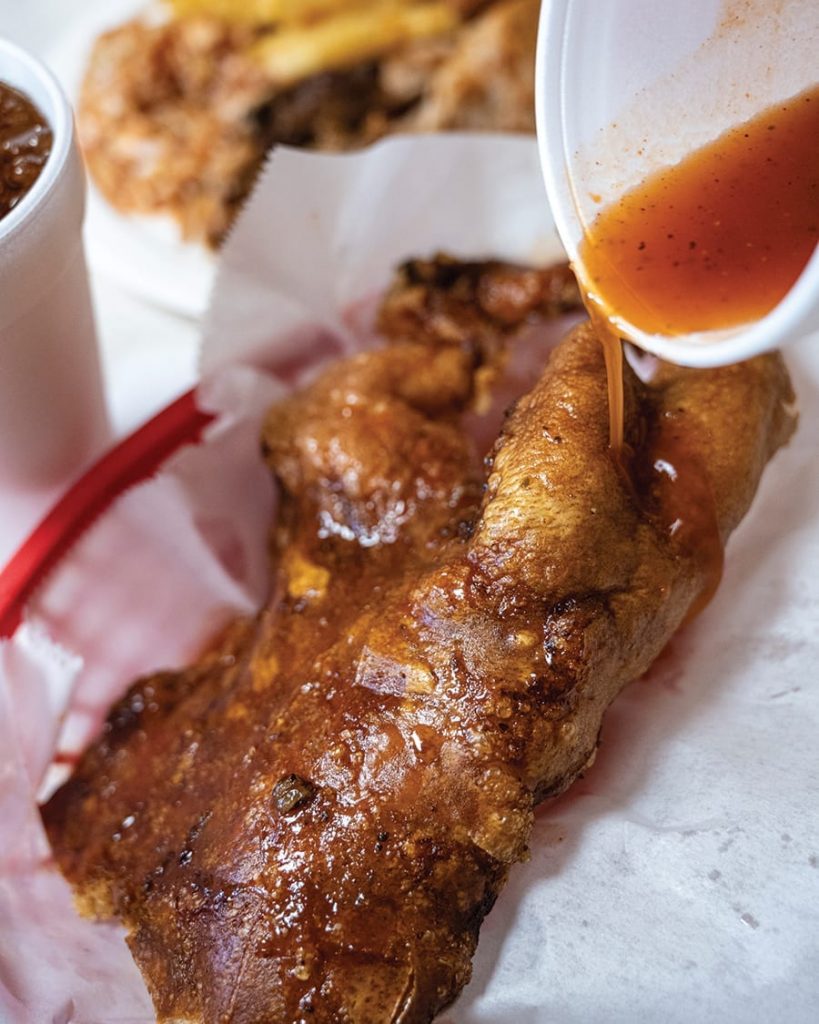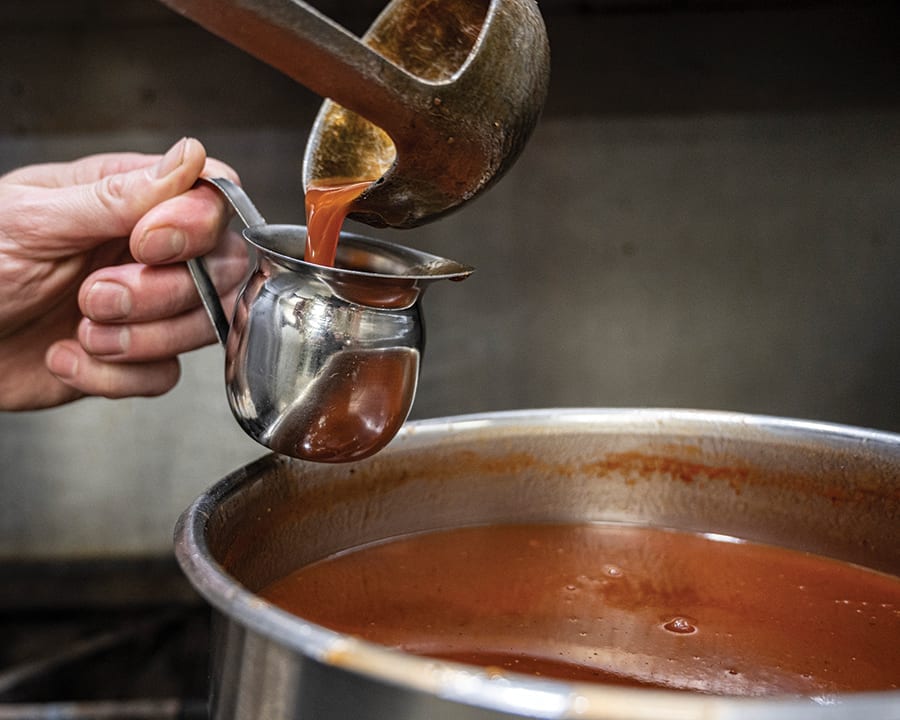Smoky perfection
October 1, 2020
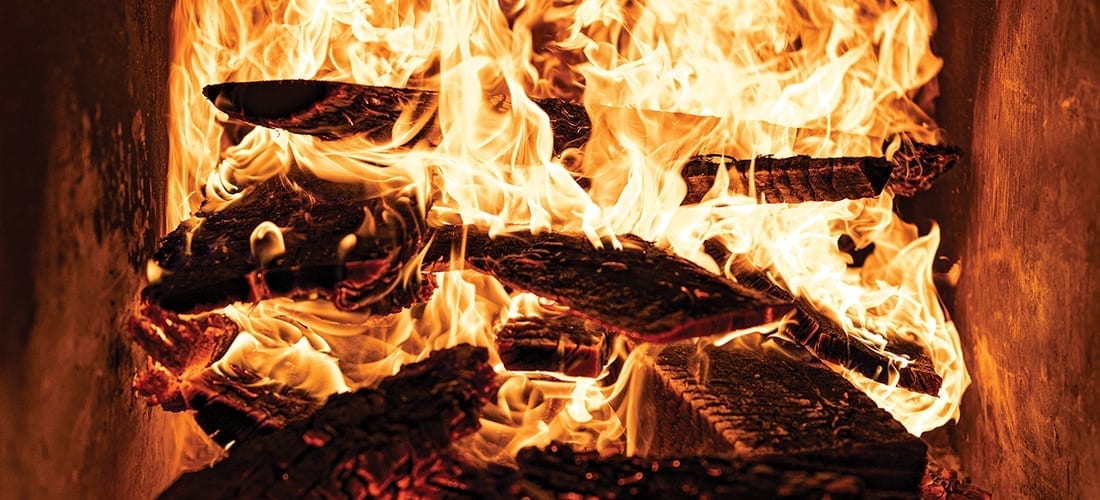
Lexington barbecue is steeped in tradition.
by Vanessa Infanzon · photographs by Michael Hrizuk
Billowing smoke from barbecue pits and the smell of cooked pig were part of the spectacle during courthouse sessions in Lexington, North Carolina, in the early 1900s. It was a chance for the people to have their day in court — and eat barbecue, too.
District court judges traveled across North Carolina to hold sessions in the county seats. The aroma of smoked pig was the signal for the judge to call a recess, no matter where they were in a hearing, says Newell Clark, the town’s mayor since 2011. Lexington, with a population of roughly 19,000, is about 60 miles northeast of Charlotte, or about an hour’s drive.
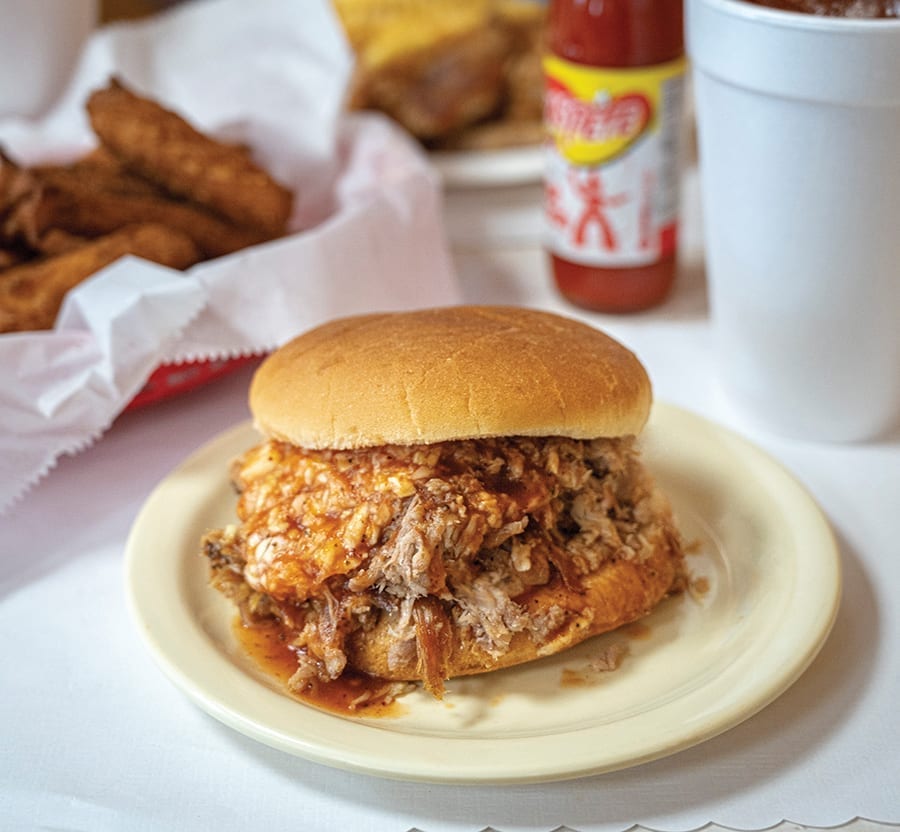
In 1916, Sid Weaver cooked in open pits and began selling barbecue outside of the courthouse at the corner of West Center and Greensboro streets, an area now dubbed Barbecue Alley. Eventually, Will Johnson and Jesse Swicegood also set up stands selling barbecue — and not just on court dates — according to Lexington’s history.
Beck’s Barbecue was the first brick-and-mortar barbecue “joint” — the preferred name — and Weaver, who is revered as the “Father of Lexington-style barbecue,” served as the pitmaster. By the 1950s and 1960s, barbecue joints were spread all over Lexington, at times as many as 20 within Davidson County, a longtime hub for furniture and textile manufacturing.
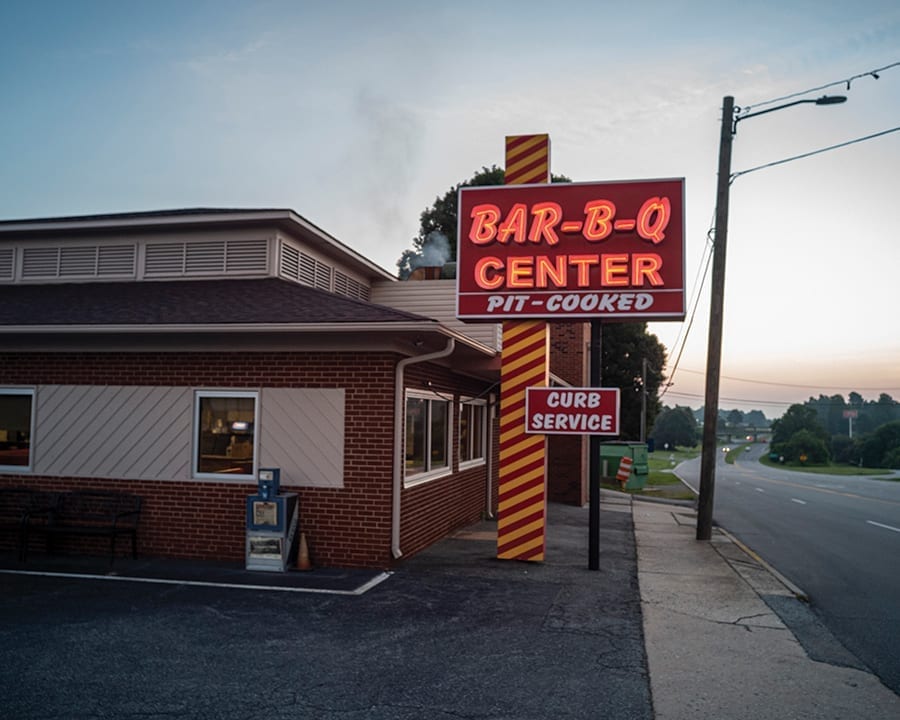
Five years ago, a renovation of city hall revealed the 1930s brick-and-mortar pits from Beck’s Barbecue joint. They were hidden behind wallboard hung in a 1970s renovation. It’s now a public exhibit.
“As they started to do the demo, we saw these four windows,” Clark says. “We had a lot of older citizens coming in saying, ‘I knew that was there.’”
Today, there are 15 barbecue joints throughout the county, most operated by second-generation family members, with a third-generation in training.
“Barbecue is a religion here,” Clark says.
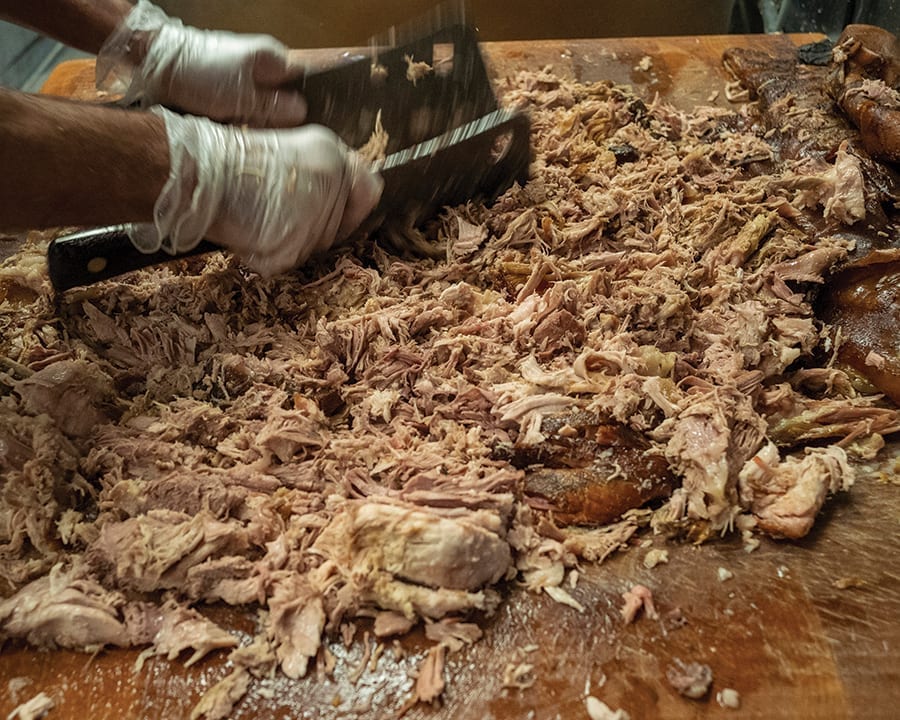
Lexington-style barbecue implies the meat is cooked and served in a similar way: Pitmasters slow cook pork shoulder over hot oak or hickory coals, usually every day. Menus feature barbecue sandwiches, plates or trays, with the meat served chopped, sliced or coarse-chopped. Some restaurants include burgers, hot dogs, smoked turkey and homemade desserts on the menu. Choices for sides might include baked beans, French fries, hush puppies and macaroni and cheese. Lexington slaw —chopped cabbage mixed with ketchup and vinegar, not mayonnaise — is typically served on top of the pork unless otherwise requested. Add sweet or unsweet tea or Cheerwine to complete the order, and it’s ready in a matter of minutes.
Michael Conrad operates the Bar-B-Q Center on North Main Street with his brother, Cecil Conrad, and their mother, Nancy Conrad. The restaurant’s been around since 1955, opening originally as the Dairy Center.
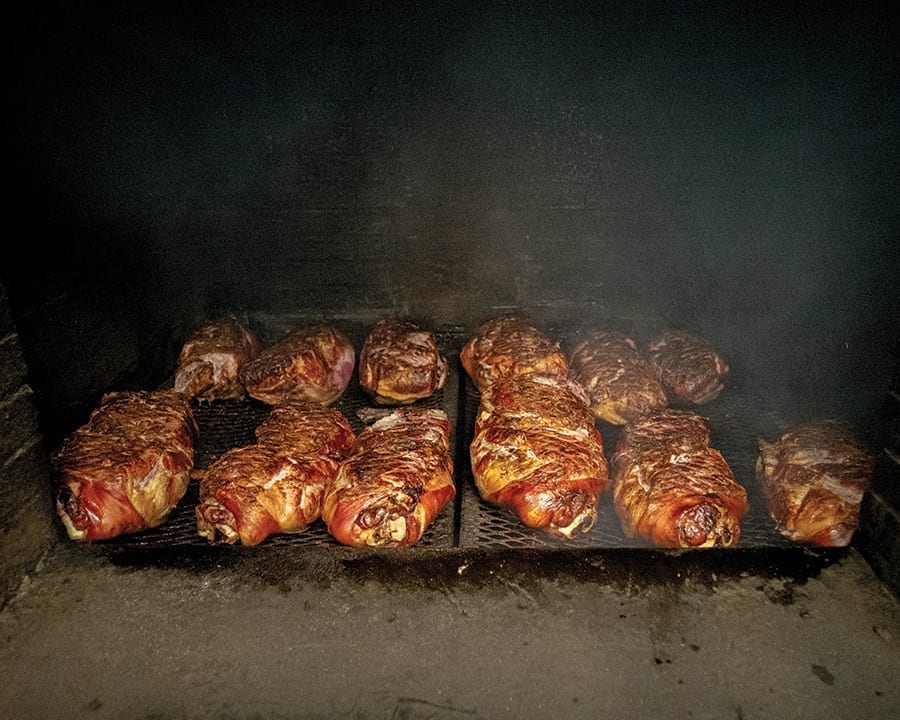
“It takes eight to 10 hours [to cook],” Michael Conrad says. “In one day, we cook about 350 to 700 pounds [of meat].”
Rick Monk is a second-generation owner. His father, Wayne Monk, started Lexington Barbecue in 1962 with Sonny Honeycutt. The location off Interstate 85 was not considered ideal at the time. Honeycutt left the business after 60 days. Some locals still refer to the restaurant as Honey Monk’s, while others just call it Monk’s. Either way, if you ask a local how to find Lexington Barbecue, they won’t know where to direct you.
Lexington style barbecue is meant to be enjoyed without heavy sauces: The taste of the meat is what’s important. When you’re in Lexington and want something extra, be sure to ask for the dip, not sauce.
“[The name] dip actually comes from drippings, believe it or not,” Monk says. “Seniors, from age 75 to 100, that have been around Davidson County all these years, would call the grease coming off the bottom of the shoulders ‘drippings.’ They would collect it and pour it back on the shoulders.”
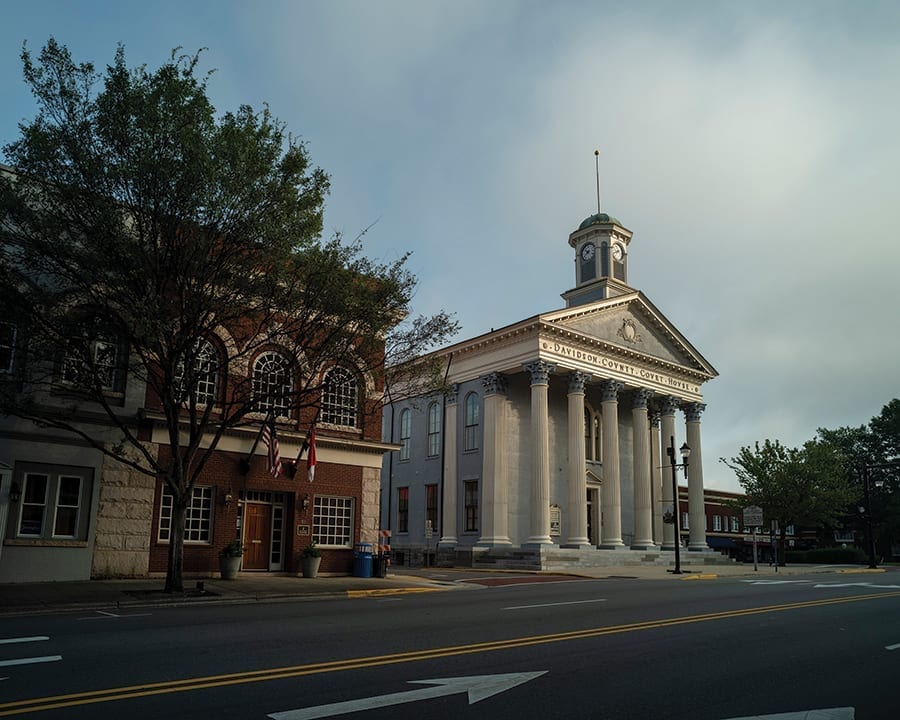
These days, dip is a vinegar-based sauce used for sandwiches, fries, even hush puppies. Each Lexington joint makes its own proprietary dip with a blend of spices.
“We make about 400 gallons of dip a week to use in the restaurant,” Monk says. “I would not sell [the recipe] for a million bucks.” SP
Festival break: Since 1984, Lexington has hosted its iconic Barbecue Festival, an event bringing in more than 20,000 participants by car, plane and train. Due to Covid-19 guidelines, organizers had to cancel this year’s event but are already looking ahead to next year’s festival on October 23, 2021. Ten blocks on Main Street are cordoned off for pig races, children’s rides, an elaborate sand sculpture, antique and Corvette car shows, a BMX bicycle-stunt show, arts and crafts, and other vendors. Seven stages highlight live local, regional and national acts. Of course, plenty of Lexington-style barbecue is available for purchase. Get to the festival early to see the mayor kick off the celebration with a ceremonial first bite of a barbecue sandwich.
